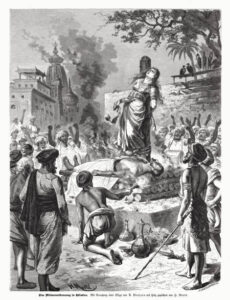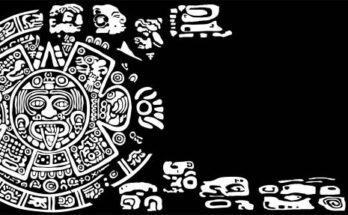Religion and violence have shared a long and intricate relationship throughout human history. While many religious teachings advocate for peace, love, and compassion, there is an undeniable presence of violence in the name of faith. This complex interplay between religion and violence raises profound questions about the nature of belief systems, the impact of interpretation, and the role of religion in shaping human behaviour. This essay aims to explore the multifaceted relationship between religion and violence, delving into historical instances, contemporary challenges, and potential avenues for reconciliation.
Historical Perspectives
 (Photo from iStock)
(Photo from iStock)
Throughout history, religious beliefs have played a pivotal role in shaping societies, often acting as a moral compass for individuals. However, the same religious doctrines that preach tolerance and love have been used to justify acts of violence. One notable historical example is the Crusades, where religious fervour fuelled brutal military campaigns in the name of Christianity. Similarly, religious conflicts such as the Thirty Years’ War in Europe and the Sunni-Shia divide in Islam underscore how religious differences have been a catalyst for violence.
Religious texts themselves are not immune to interpretation, and their meanings can be manipulated to justify violent actions. The Hebrew Bible, for instance, contains passages depicting violence in the context of religious duty, while the Quran has verses that some extremists interpret to legitimize acts of terrorism. It becomes apparent that the way religious teachings are understood and applied can significantly influence the propensity for violence.
Contemporary Challenges
In the contemporary world, religion continues to be entangled with violence, manifesting in various forms. Religious extremism, terrorism, and communal conflicts often find their roots in deeply held religious convictions. The rise of groups like ISIS, Boko Haram, and the Taliban exemplifies how distorted interpretations of religious texts can be exploited to justify heinous acts.
Moreover, the intersection of religion and politics adds another layer to the challenge. The misuse of religious identity for political gain can exacerbate tensions and lead to violence. Instances of interfaith and intra-faith violence, such as the persecution of religious minorities, highlight the volatile nature of the relationship between religion and violence in the contemporary world.
Psychological Dimensions
Understanding the psychological aspects of the relationship between religion and violence is crucial. Scholars argue that individuals may be more prone to violent behaviour when they perceive their religious beliefs to be under threat. This defensive mindset can lead to a willingness to use violence as a means of protecting one’s faith.
Moreover, the psychological impact of religious indoctrination cannot be overlooked. The process of radicalization often involves manipulating individuals into believing that violence is not only justified but also divinely ordained. This manipulation of religious fervor for violent ends underscores the intricate connection between the human psyche, religious beliefs, and acts of violence.
Role of Institutions
 (Photo from iStock)
(Photo from iStock)
Religious institutions, as influential custodians of faith, play a pivotal role in shaping the narrative around religion and violence. While many religious leaders advocate for peace and tolerance, there are instances where religious institutions have been complicit in or even actively supported violent actions. The misuse of religious authority can have far-reaching consequences, as seen in cases where religious leaders incite violence or endorse extremist ideologies.
However, religious institutions also have the potential to be agents of positive change. Interfaith dialogue, peace initiatives, and efforts to promote understanding among different religious communities can contribute to mitigating the association between religion and violence. Leaders who actively work to disentangle religion from violent interpretations can serve as powerful catalysts for positive transformation.
Addressing Root Causes
To effectively address the issue of religion and violence, it is essential to delve into the root causes. Socioeconomic factors, political instability, and a lack of education can contribute to an environment where religious extremism flourishes. By addressing these underlying issues, societies can create conditions that are less conducive to the emergence of violent religious ideologies.
Education, in particular, plays a crucial role in shaping perspectives on religion. Promoting religious literacy and teaching critical thinking skills can empower individuals to engage with their faith in a nuanced and thoughtful manner. Additionally, fostering an environment that encourages interfaith understanding can contribute to dismantling stereotypes and prejudices that often fuel violence.
Case Studies in Religious Harmony
While instances of religious violence are prevalent, there are also examples of societies where different religious communities coexist harmoniously. India, with its diverse religious landscape, provides a case study in religious pluralism. Despite occasional tensions, India has a long history of communities practicing various religions side by side, fostering a rich tapestry of cultural and religious diversity.
Similarly, certain African nations demonstrate the potential for religious tolerance and coexistence. Countries like Senegal and Mali have a tradition of religious pluralism. Where Islam peacefully coexists with indigenous belief systems and Christianity. These examples underscore that peaceful coexistence is not only possible but has been a reality in various parts of the world.
Conclusion
The relationship between religion and violence is a complex and multifaceted phenomenon. That cannot be easily distilled into a singular narrative. While historical instances and contemporary challenges point to the potential for violence within religious contexts. It is crucial to recognize that religion, in and of itself, is not inherently violent. Instead, it is the interpretation and application of religious teachings. Often influenced by social, political, and economic factors, that contribute to the association between religion and violence.
To break the cycle of violence associated with religion, it is essential to address root causes. Promote education, and encourage interfaith dialogue. Religious institutions and leaders have a significant role to play in fostering a narrative of peace and tolerance. By understanding the psychological dimensions of religious belief and the impact of interpretation. Societies can work towards creating an environment where faith is a force. For positive change rather than a justification for violence. Ultimately, the journey towards reconciling religion. And violence requires a collective effort that transcends boundaries and embraces the shared humanity that unites us all.




